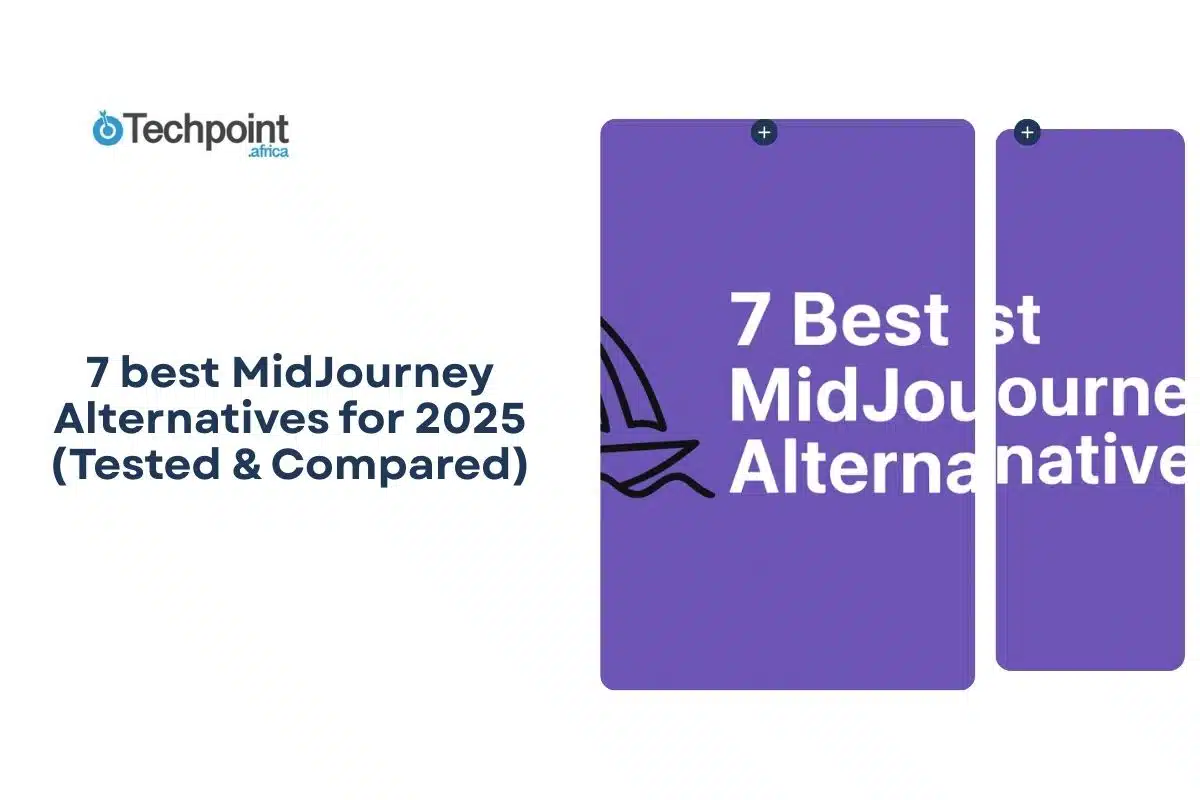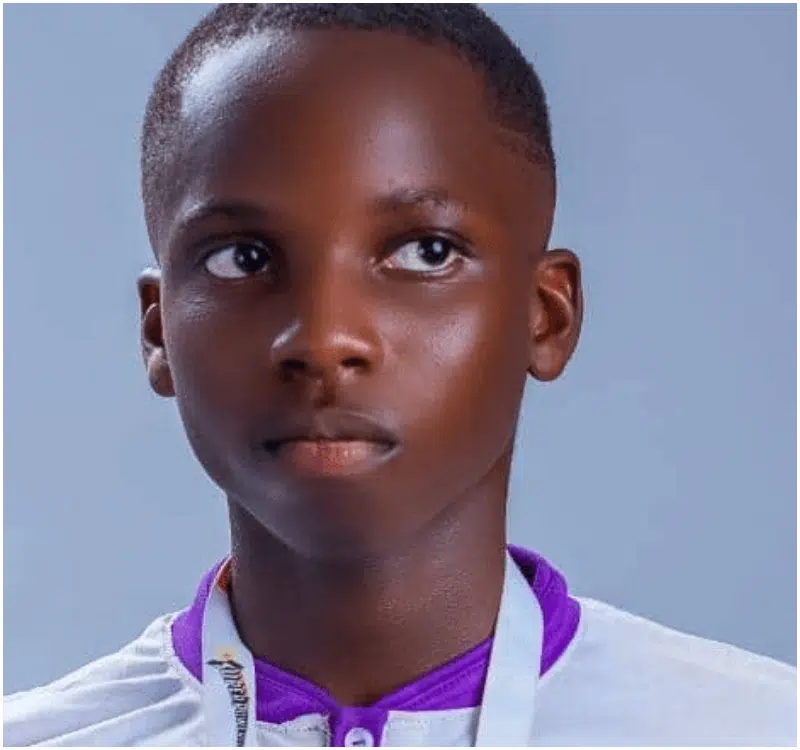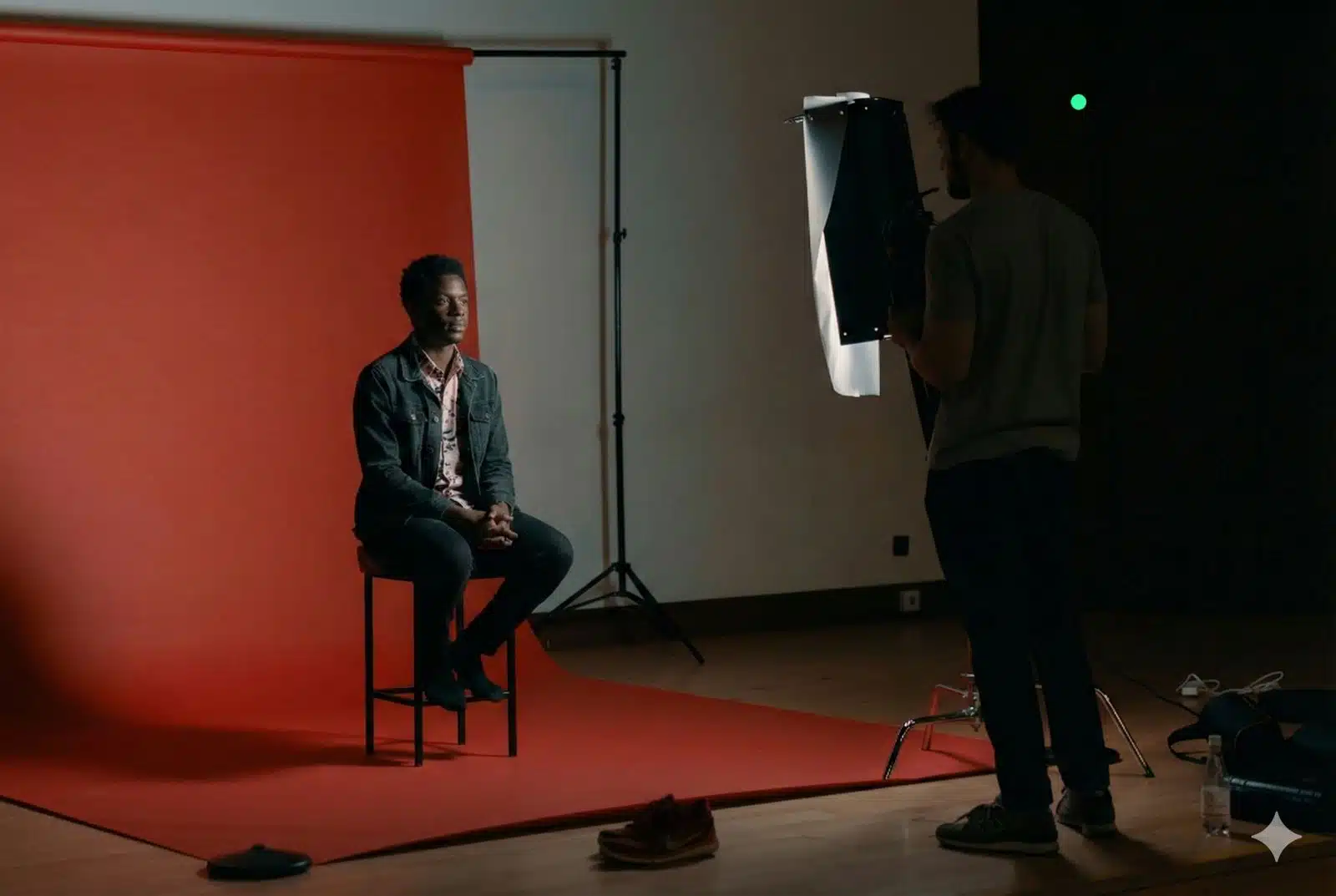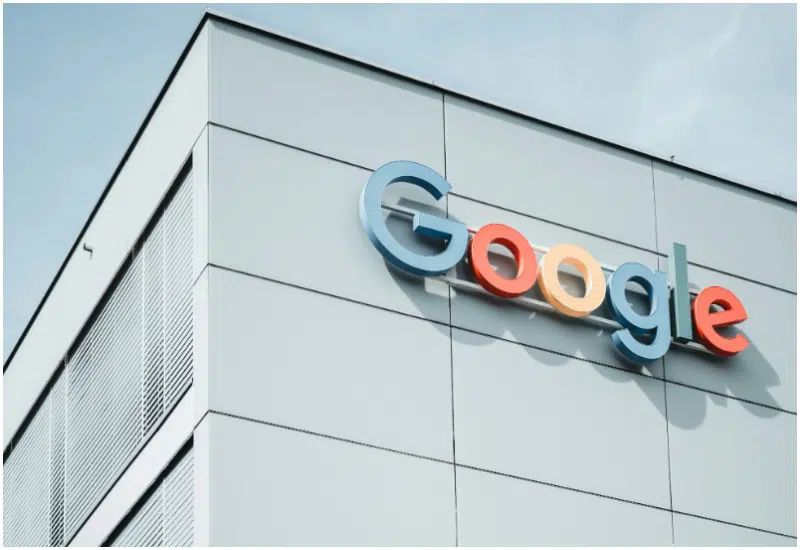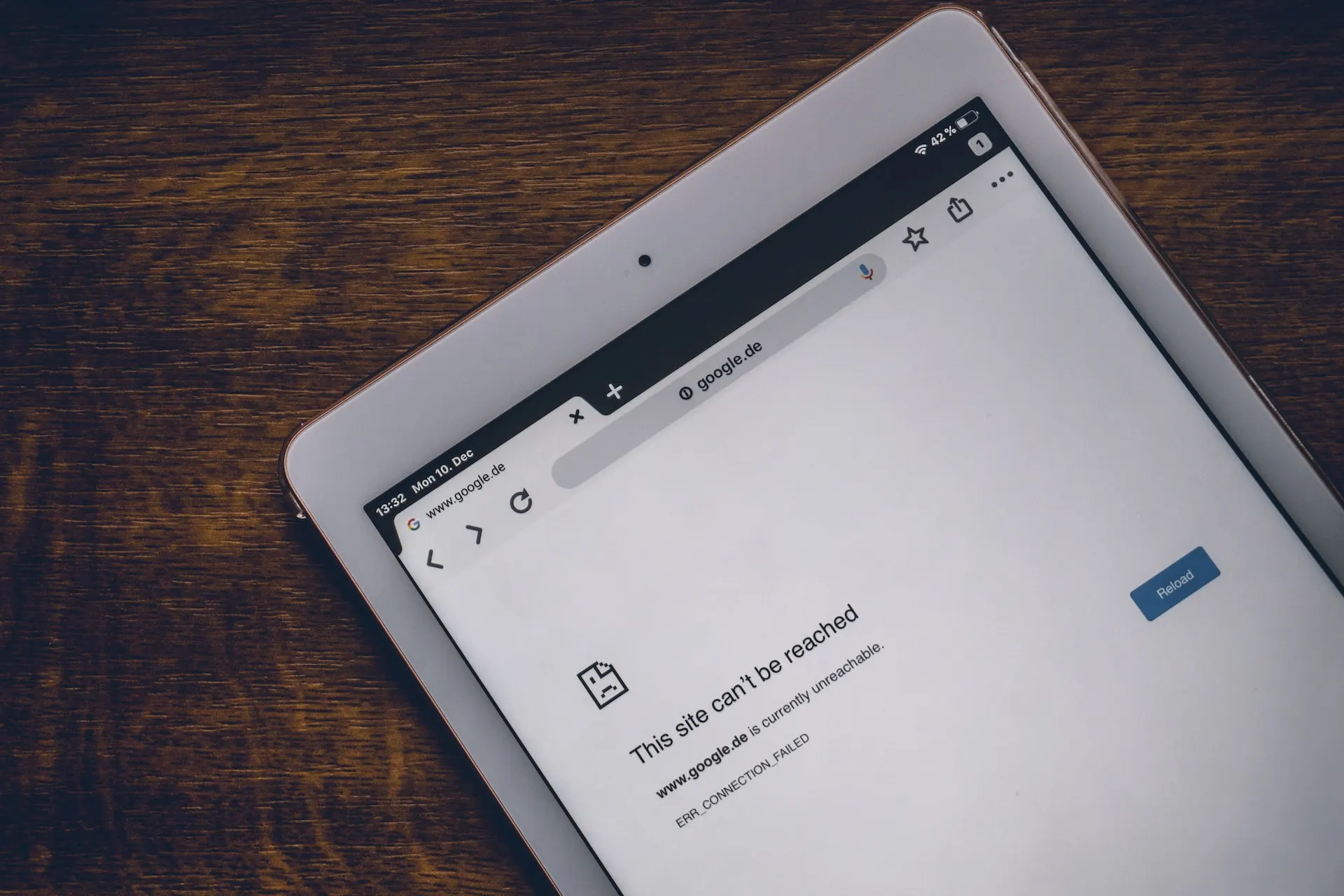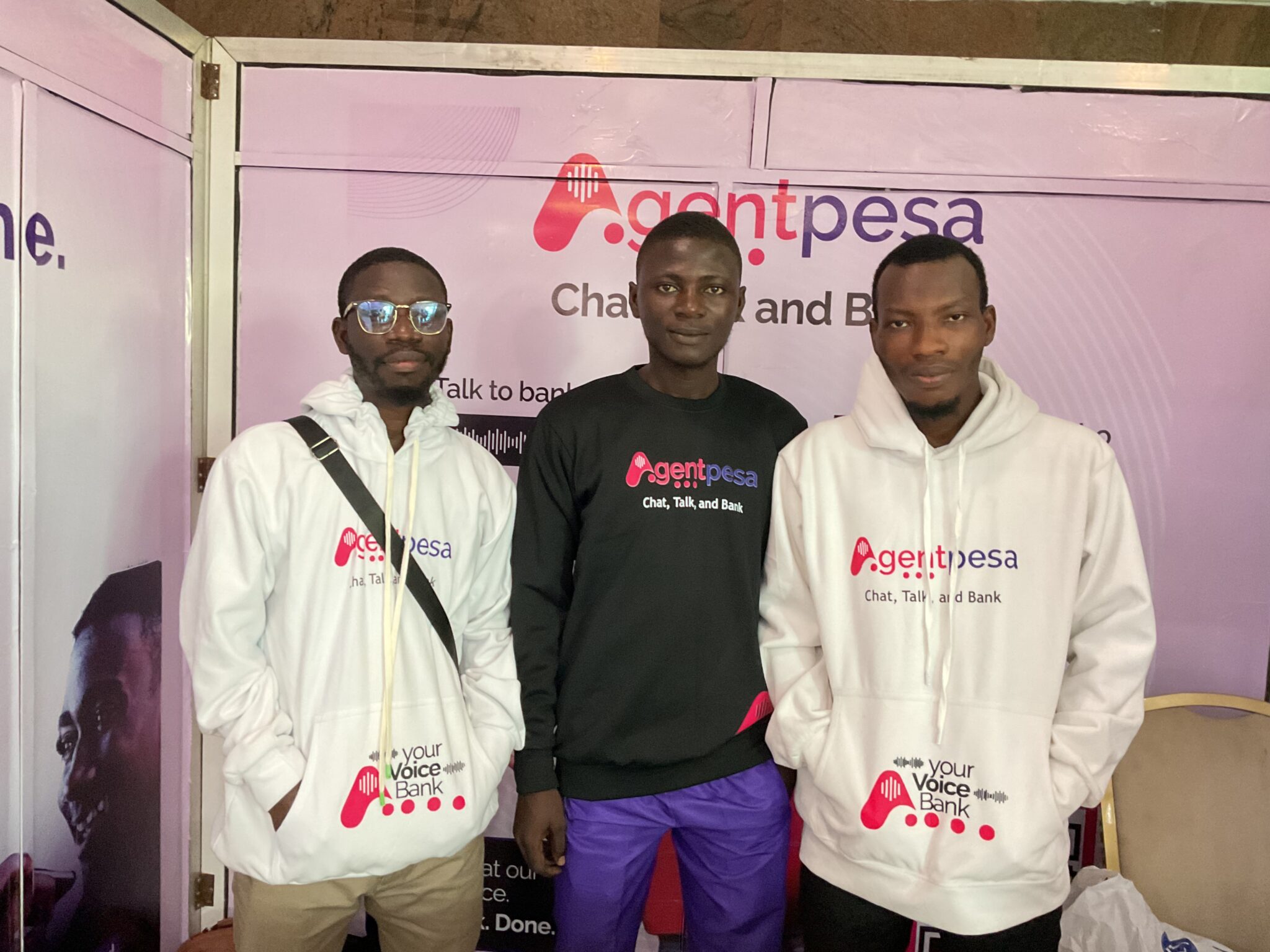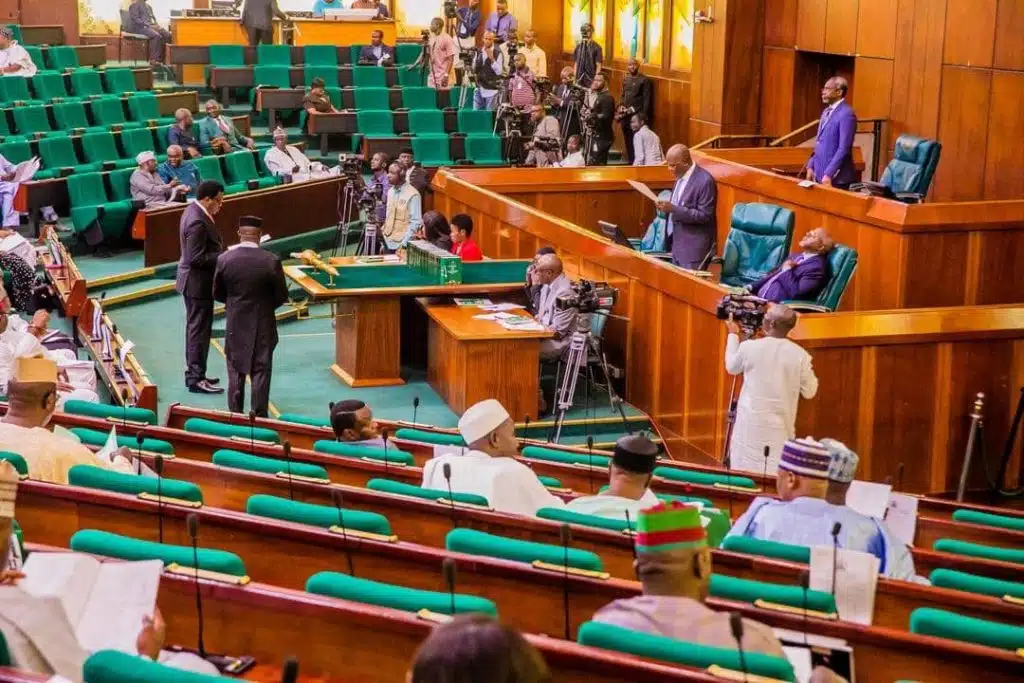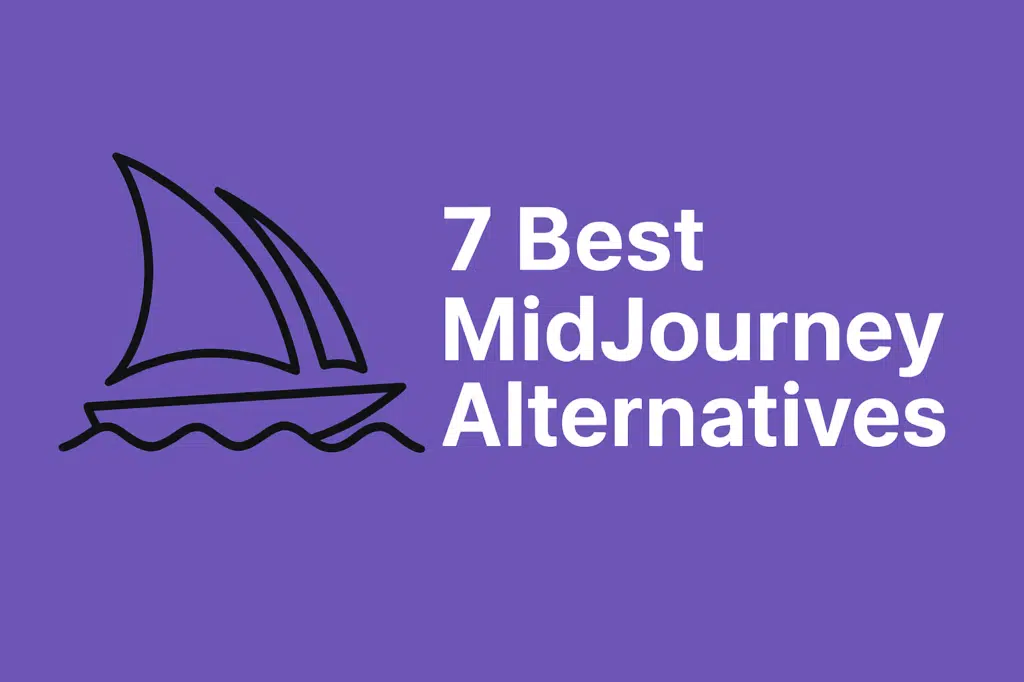
Midjourney can produce striking art, but after dozens of image tests, I realised I should spread my tent. Some alternatives I found gave far better control, commercial licensing, photorealism, or cost structures; those differences matter in real projects. I had a good time with these alternatives, and here’s what I have to say.
In this article, you will learn:
- Which seven Midjourney alternatives are worth using in 2025
- What I did during testing, and the real strengths and drawbacks I encountered.
- Exact pricing lines and which tool is best for photographers, designers, developers, or marketers.
- My recommended pick for specific use cases and why.
The 7 Midjourney Alternatives I Tested
- DALL·E 3 (OpenAI)
- Stable Diffusion (via DreamStudio / Stability AI or local runs)
- Leonardo AI
- Adobe Firefly
- NightCafe
- Flux (Flux. 1 family)
- Canva AI Image Generator
Quick Overview Table
| Rank | Tool | Short Description | Pros | Cons | Price (2025, US entry-level) |
| 1 | DALL·E 3 (OpenAI) | Natural-language, ChatGPT-integrated image model. | Conversational prompt refinement; reliable general-purpose results; built-in editing/inpainting. | Less control for stylized art; API usage can get costly at high volume. | Included with ChatGPT Plus ($20/mo) or pay-per-API. |
| 2 | Stable Diffusion (DreamStudio / local runs) | Open-source core with credited hosted UI; fully customizable. | Huge model ecosystem; offline/local runs; full control with LoRAs, ControlNet, etc. | A technical setup is needed. Quality varies between models, and hosted UIs need credit monitoring. | ≈ $10 per 1,000 credits (1 credit ≈ $0.01). |
| 3 | Leonardo AI | Artist-focused creative suite with stylised asset packs. | Great for stylized illustration, asset-pack export, good licensing, and variation tools. | Free tier limits (tokens, public images); less ideal for photorealism; no offline generation. | Paid plans from about $10-$12/mo; API tiers start ~$9/mo. |
| 4 | Adobe Firefly | Integrated with Creative Cloud; commercial safe, vector + image + design. | Professional workflow integration; excellent for print/vector; safe licensing. | It needs a subscription; overkill if it is just occasional use; the cost adds up if it is only for generation. | Included via Creative Cloud / Firefly plans (from ~$20/mo). |
| 5 | NightCafe | Multi-model (“Stable Diffusion, DALL-E 3, etc.”), credit-/subscription-based platform with strong free tier. | Very beginner-friendly; daily free credits; active, creative community; many model/style options; ownership of generated art. | Advanced/high-quality outputs cost many credits; the free tier has resolution/model/feature limits; sometimes unpredictable results with complex prompts; some users say wasted credits on unusable outputs. | Free version (5 daily credits + community-earned credits); then plans: AI Beginner ~$5.99/mo; AI Hobbyist ~$9.99/mo; AI Enthusiast ~$19.99/mo; AI Artist ~$49.99/mo. |
| 6 | Flux (Flux.1) | Cinematic, photoreal-leaning model family; high fidelity. | Strong realism; clean lighting and skin; fewer artifacts; good for photography-style visuals. | Fewer creative presets, fewer community model checkpoints, and a still-growing ecosystem. | Entry plans ~ $12-$19/mo with credit packs. |
| 7 | Canva AI | Text-to-image inside Canva’s design platform, with built-in templates and design editing. | Speedy workflow; integrated design + image + export; good for social/business visuals; easy UX. | It is not best for stylized or editorial art; it has less control and depth, and is weaker for very high-resolution or hyper-detail. | Canva Pro ~$12.99/mo (individual). |
How I chose these MidJourney Alternatives
I didn’t want to rely on popular names that show up in a Google search or a featured snippet. My goal was to find tools that could realistically fit into my creative workflow and feel like long-term options I’d use. To make that judgment, I evaluated each platform the same way I would if I chose a tool. Here’s what I paid attention to while testing:
Image quality and reliability
I tested each generator with straightforward and more layered, detailed prompts. What mattered to me was whether the images consistently came out sharp, coherent, and close to what I had in mind.
Variety of styles
I wanted tools that could move beyond a single signature look. While experimenting, I checked whether they could switch between photorealism, stylized art, fantasy scenes, and design-friendly graphics without losing quality.
Ease of Use
A tool should help, not hinder me. I noted how intuitive each platform felt during its initial use and whether it offered sufficient depth when I wanted to fine-tune details or iterate on an idea.
Licensing Confidence
Since I sometimes use generated images in professional settings, I paid close attention to how precise and reliable each platform was about commercial rights and ownership.
Pricing vs. Value
I didn’t just look at the subscription numbers—I tracked how much I could create before hitting a paywall or running out of credits. Some tools allowed me to experiment freely, while others felt more restrictive.
Community and Ecosystem
MidJourney’s community is a key factor in what makes it so engaging. I wanted to identify alternatives that had active user bases, resource sharing, or marketplaces that made the creative process less isolated.
Standout features
Finally, I highlighted any unique features that made the platform more useful in practice, such as Canva’s design templates or Firefly’s direct integration with Photoshop.
Let’s see these tools fully now.
The 7 Best MidJourney Alternatives
1. DALL·E 3 (via ChatGPT)
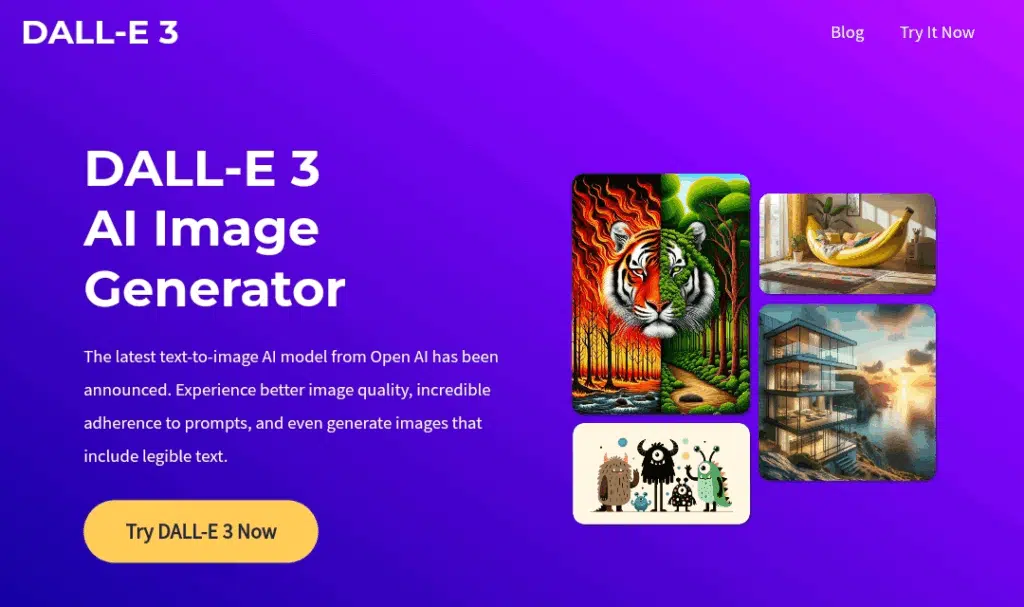
I typed full-sentence prompts using DALL·E 3, and the model translated them into images almost precisely as I pictured. Unlike MidJourney, where I sometimes had to refine prompts repeatedly, I could describe an idea casually, and the system handled the details here. The most significant advantage was this conversational iteration. The image quality was sharp, though not as artistic as MidJourney’s, but it handled text generation inside images far better.
Pros
- Excellent prompt comprehension
- Generates text inside images better than most tools
- Integrated directly with ChatGPT for conversational refinement
Cons
- Limited customization compared to Stable Diffusion
- Requires a ChatGPT Plus subscription for access
Pricing
$20/month (ChatGPT Plus subscription)
Ideal user
Best for users who want simple, reliable AI art generation without extra setup.
2. Stable Diffusion
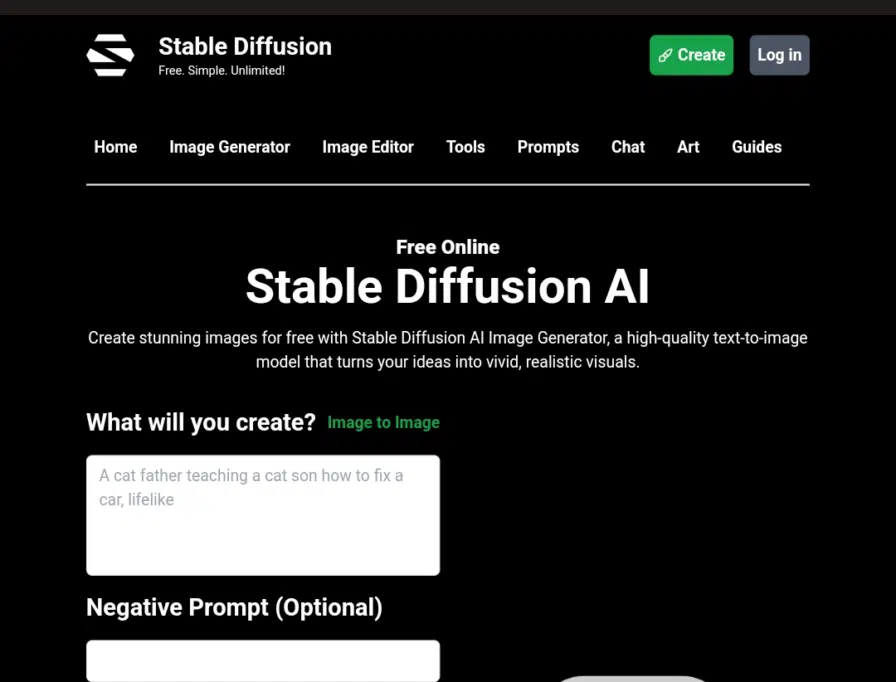
Stable Diffusion was the most flexible option I tested, but demanded the most effort. I installed it locally and experimented with community models of everything from anime styles to hyperrealistic photography. The ability to fine-tune outputs with extensions like ControlNet made it incredibly powerful for precise results. However, setting it up on my GPU wasn’t beginner-friendly, and rendering high-resolution images took time. Still, once running gave me complete control that no other platform matched. I could train models on my references, making it feel like a personal art engine instead of a shared tool.
Pros
- Open-source and customizable
- Massive library of extensions and models
- Works offline with local installation
Cons
- Steeper learning curve for beginners
- Hardware-intensive for high-resolution outputs
Pricing
Pricing (2025): DreamStudio / Stability uses credit pricing (≈ $10 per 1,000 credits; 1 credit is $0.01), while local runs are free except for hardware.
Ideal user
Best for advanced users who want full control and customization.
3. Adobe Firefly
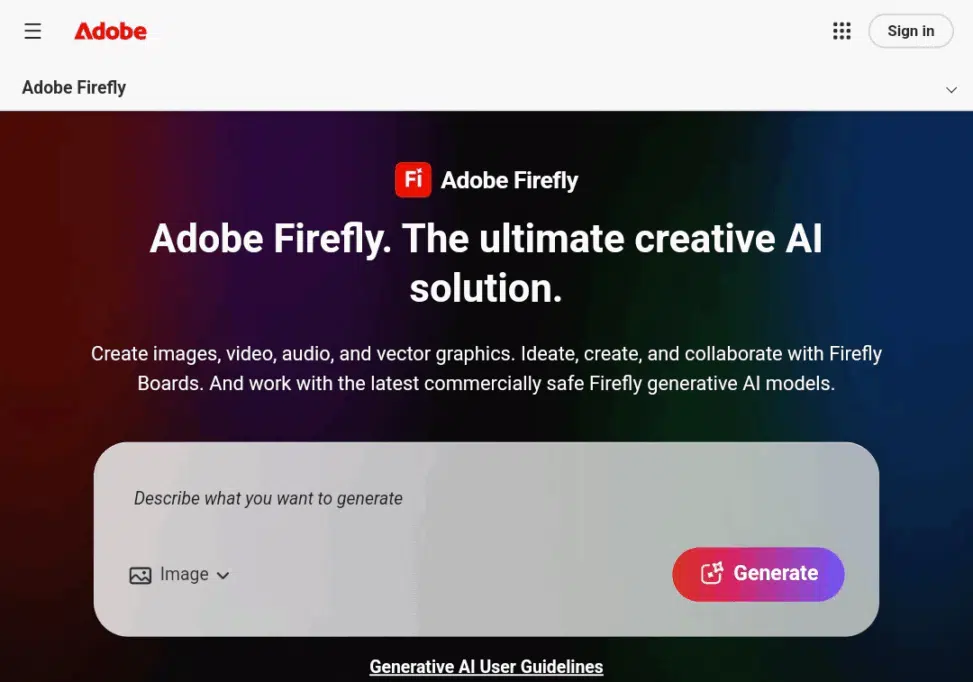
Testing Adobe Firefly gave me the sense of using a tool designed for professionals first. I used it directly inside Photoshop and Illustrator, which made it easy to refine AI outputs with standard design tools. Unlike MidJourney or Stable Diffusion, every image generated here is trained on licensed content, meaning I don’t have to second-guess whether the results are safe for commercial use. The editing tools were impressive: I could extend an image background seamlessly or upscale without losing clarity.
Pros
- Commercially safe outputs
- Integrated into Adobe Creative Cloud
- Excellent upscaling and editing features
Cons
- Requires an Adobe subscription
- Slower updates compared to open-source models
Pricing
$19.99/month+ (Creative Cloud plan)
Ideal user
Best for professionals needing legally safe assets for client work.
4. NightCafe
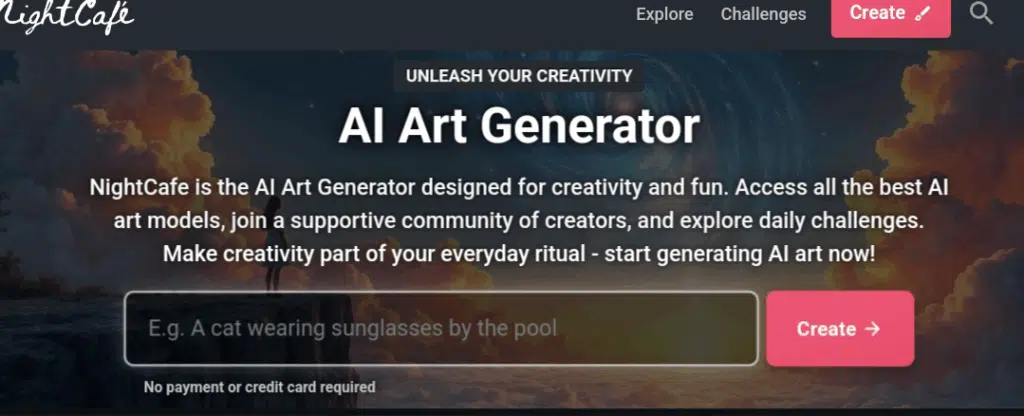
NightCafe felt like a community-driven art hub. When I tested it, I didn’t just generate images — I also explored galleries where other users shared prompts and outputs. This gave me new ideas and shortcuts that I wouldn’t have discovered otherwise. The interface was simple enough to get results within minutes, and I appreciated the daily free credits for casual experimenting. The quality wasn’t as consistent as MidJourney or Flux, but it encouraged experimentation in a fun and low-pressure way. For someone just starting out, it offered both a tool and a community space to grow
Pros
- Active community and creative contests
- Simple UI for beginners
- Daily free credits available
Cons
- Output quality is not as consistent as MidJourney
- Limited advanced editing features
Pricing
Free tier (with daily credits)
Paid packs from $5
.99/month
Ideal user
Best for beginners and hobbyists who value community engagement.
5. Flux (Flux.1)
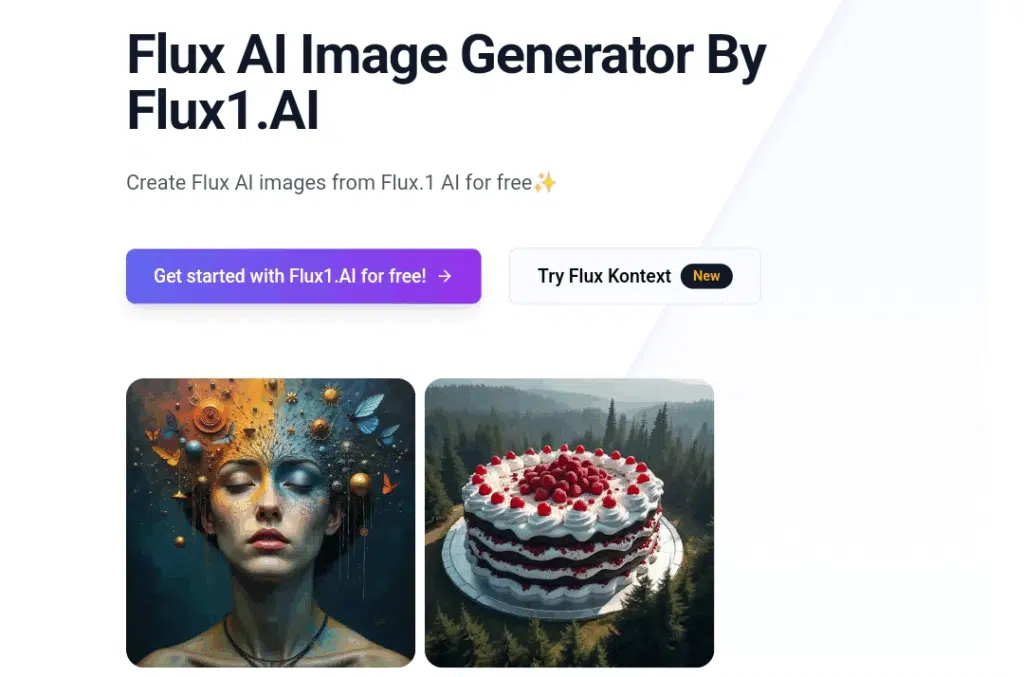
Flux was the model I tested specifically for photorealism, and it delivered. I used prompts with fine details about lighting, camera angles, and facial features, and the results came back almost cinematic. Unlike Leonardo AI, which leaned into stylization, Flux produced renders that felt like stills from a high-end DSLR camera. It wasn’t perfect; occasionally, hands or small objects looked unnatural, but the quality was stunning when it worked.
Pros
- Excellent photorealistic rendering
- Handles complex compositions well
- Cinematic quality images
Cons
- Limited creative stylization compared to Leonardo AI
- Still relatively new, with fewer integrations
Pricing
$10–$30/month, depending on credits
Ideal user
Best for creators who prioritize realistic, cinematic images.
6. Leonardo AI
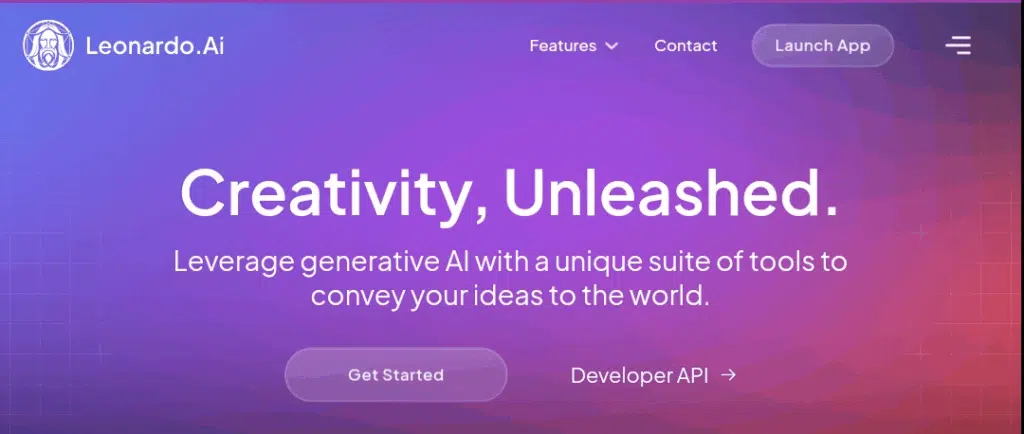
Leonardo AI stood out during testing for its creative stylization. I generated game character concepts, landscapes, and props, and the outputs looked ready for a design pipeline. The token system helped manage generations, and I liked the pre-built models that leaned toward fantasy, sci-fi, and stylized looks. It wasn’t as strong as Flux in realism, but it wasn’t trying to be — its strength is creating imaginative, production-ready assets. The UI had a slight learning curve, but it became one of my go-to tools for creative brainstorming once I figured out the workflow.
Pros
- Tailored for game and character design
- Strong stylized art generation
- Custom training options available
Cons
- Not as strong in photorealism
- The interface can feel cluttered at first
Pricing
Free tier available
Paid from $10/month
Ideal user
Best for artists and game designers who need creative assets.
7. Canva AI
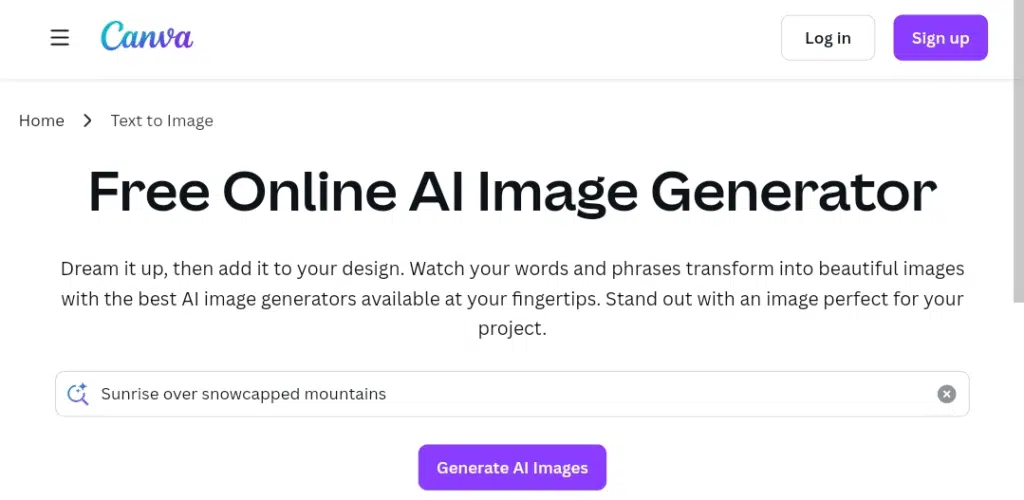
When I tested Canva AI, I wasn’t expecting much beyond basic image generation, but it was one of the most practical tools. Without leaving the platform, I could generate an image and instantly drop it into a presentation, social post, or infographic. The speed was unmatched — I created visuals for a mock marketing campaign in under 15 minutes. While the images weren’t on the same level as Flux or DALL·E 3, the overall workflow integration made it incredibly efficient.
Pros
- Simple drag-and-drop interface
- Integrated with the full Canva design suite
- Ideal for quick marketing assets
Cons
- Image outputs are basic compared to MidJourney
- Limited customization options
Pricing
Free tier available
Canva Pro $12.99/month
Ideal user
Best for marketers, social media managers, and small businesses.
Verdict — Who Wins for What?
| Category | Winner | Why It Stands Out |
| Best all-rounder | DALL·E 3 (via ChatGPT) | Balanced mix of reliability, detail, and natural prompt iteration. |
| Best for complete control/research | Stable Diffusion (local/DreamStudio) | Maximum customization with strong community support and open models. |
| Best for stylized game art | Leonardo AI | Purpose-built tools and workflows that suit illustrators and asset creation. |
| Best for agencies/professionals | Adobe Firefly | Fits directly into Creative Cloud with clear licensing for commercial use. |
| Best community-driven platform | NightCafe | Active user base, daily free tier, and multiple generation models. |
| Best for photorealism | Flux (Flux.1) | Consistent high-detail output with strong handling of lighting and realism. |
| Best for speed + design | Canva AI | Quick generation inside a design suite for layouts, posts, and campaigns. |
Final takeaway
Using these MidJourney alternatives made me realize that strength lies in choice, not a single “best” platform.
DALL·E 3 gave me the most balanced experience for everyday prompts, while Stable Diffusion offered the freedom to tweak every detail. Leonardo AI proved ideal for stylized assets, Adobe Firefly fit seamlessly into client projects, Flux stood out for realism, Canva delivered speed for design work, and NightCafe provided a community-driven option with generous unrestricted use.
Each tool answers a different creative need, and the best fit depends on what you’re trying to build. If you’re ready to go beyond MidJourney, match one of these platforms to your workflow, and you’ll unlock results that feel made for you.
Also Read:
Leonardo AI vs Midjourney: which is the best AI art generator in 2025

